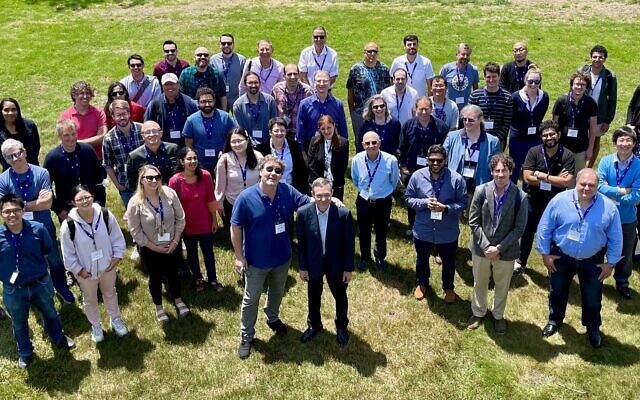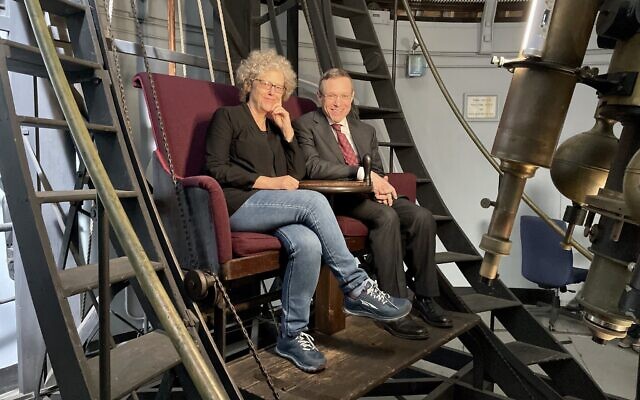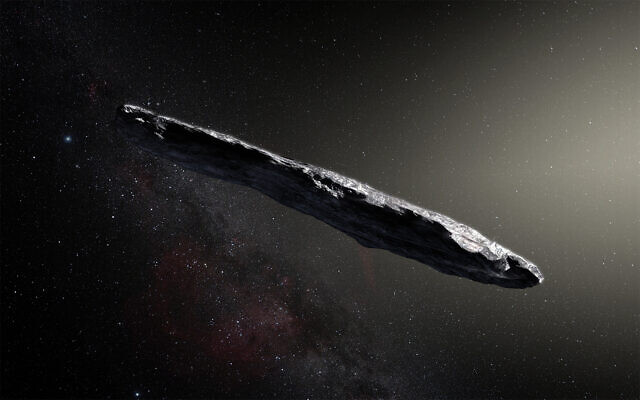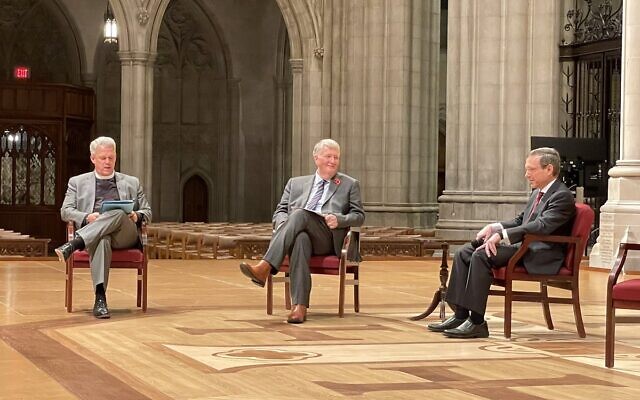Israeli native and Harvard University science professor Avi Loeb’s 60th birthday this past June was marked by both celebration and vindication.
For the last three years, Loeb — a prominent but controversial theoretical physicist — and his assistant Amir Siraj have tried to publish a paper about a mysterious, half-meter-sized meteor that crashed off Papua New Guinea back in 2014. Loeb and Siraj claim it to be the first recorded object that was interstellar in origin.
Their paper was rejected, Siraj wrote in a recent Scientific American article, because the government database through which he and Loeb first learned about the meteor did not include the measurement of uncertainty — that is, the projected margin of error in its calculations on the meteor. The paper has been posted instead to the arXiv, a non-peer-reviewed site for scholarly articles.
The duo later received supporting data from two scientists at Los Alamos and from the anonymous analyst who originally tracked the meteor. But it did not represent official government confirmation of interstellar origin. That finally arrived this spring, in an April 6 tweet from US Space Command, putting the meteor on a very short list of three verified interstellar objects, joining the comet Borisov and the headline-making 2017 object termed ‘Oumuamua, Hawaiian for “traveler,” that Loeb had posited was not only interstellar but possibly extraterrestrial technology.
“I was confident from the start,” Loeb told The Times of Israel about the meteor. “Reviewers of the paper had doubts. With the [Space Command memo], the government says that based on the full data at its disposal, it’s 99.999 percent [confirmed].”
In multiple papers, he’s expressed excitement over the possibilities for the discovery of interstellar objects — meaning those originating from regions of space beyond the solar wind caused by the Sun.
Prof. Avi Loeb gives a lecture at the Coolidge Corner Theatre in Brookline, Massachusetts, October 18, 2021. (Courtesy)
“The fundamental question,” he wrote in a Medium piece on April 13, “is whether any interstellar meteor might indicate a composition that is unambiguously artificial in origin? Better still, some technological components would survive the impact. My dream is to press some buttons on a functional piece of equipment which was manufactured outside of Earth.”
Suffice to say, Loeb has pressed some buttons — metaphorically speaking — within the scientific community over the years. His critics include Simon Goodwin, a professor of theoretical astrophysics at the University of Sheffield, who tweaked Loeb for his comments about ‘Oumuamua in a piece for The Conversation last year. Goodwin lamented the likelihood of a maverick scientist coming up with an extraterrestrial explanation for mysterious phenomena, and recommended instead using a well-tested trio: Occam’s razor, the peer-review process and the adage “extraordinary claims require extraordinary evidence.”
Although Loeb is on sabbatical from Harvard, he is still going full speed ahead, with hopes of traveling to Papua New Guinea to scour the seabed for traces of the 2014 meteor. He wonders whether this meteor also might represent technology from beyond Earth.
As Siraj explained in his Scientific American article, which was published six days after the Space Command tweet, “The holy grail of interstellar object studies would be to obtain a physical sample of an object that originated from outside of the solar system — a goal as audacious as it is scientifically groundbreaking.”

Prof. Avi Loeb, front center, with guests at a conference held in honor of his 60th birthday, Martha’s Vineyard, Massachusetts, June 2022. (Courtesy)
The discovery has enlivened what Loeb calls the most productive period of his career, which comes during his first sabbatical in nearly two decades, after he stepped down as Harvard astronomy department chair in 2020.
During his time off from academia, Loeb has published a textbook, “Life in the Cosmos,” as well as “Extraterrestrial: The First Sign of Intelligent Life Beyond Earth,” a bestselling nonfiction account of ‘Oumuamua that has been translated into 25 languages. He’s also released an NFT while working on another book and a documentary. He continues to publish op-eds and scientific papers, and receives multiple interview requests (he once did 12 in a single day). And he’s not quite absent from Harvard. As head of the Galileo Project, he’s in charge of installing a telescope system atop the Harvard College Observatory to search for unidentified aerial phenomena or, if you prefer the more popular term, unidentified flying objects.
“It would be arrogant of us to relax on the sofa at home and ask: ‘where is everybody?’ without looking through our windows for any neighbors,” Loeb wrote in a May 18 reflection on the previous day’s Congressional hearing on UAPs, while also expressing a hope that the Galileo Project could aid the government’s investigations within one or two years.

Prof. Avi Loeb sits with author Leslie Kean in the observers seats of the Great Refractor telescope at the Harvard College Observatory, March 1, 2022. (Courtesy)
He told The Times of Israel that he regrets not being in the classroom — “teaching young people, of course, is always a pleasure” — but added, “I tremendously enjoy the creative work I’m doing in both research and writing, talking about something new. When you’re teaching a class, it’s about something that’s already in a textbook, already known. I much more enjoy finding something new.”
Loeb did just that in 2019 when he learned about the now-famous meteor from five years prior while preparing for one of his many interviews — in this case with a New York radio station.
He asked his assistant Siraj — then an undergraduate at Harvard — to look through a database called CNEOS for the fastest-moving objects that could have originated outside the solar system. The database is compiled by NASA’s Jet Propulsion Laboratory.
Siraj found that on January 8, 2014, one such object crashed into the Pacific off New Guinea. Two items from the data looked unusual. With an excess speed of about 40 kilometers (25 miles) per second outside the solar system, the meteor picked up speed as it traveled through the solar system at around 60 kilometers (37 miles) per second — around 134,000 miles per hour.
“It moved so fast,” Loeb wrote in a March 10 Medium post, “that its past trajectory was inferred to be unbound to the Sun.”
Loeb said the speed of 60 kilometers per second was double the speed that most stars move relative to the vicinity of the Sun, ruling out the possibility of these stars as an origin for the meteor. Meanwhile, the meteor’s composition appeared tougher than iron. Meteors composed of iron are rare, representing just five percent of the total number of known space rocks.
“We decided to write a paper about this being the first interstellar meteor,” Loeb said. “It preceded the discovery of ‘Oumuamua in 2017 by almost four years.”

An artist’s impression of the interstellar asteroid Oumuamua. Scientist Avi Loeb believes it could have been an extraterrestrial artifact. (Courtesy/European Southern Observatory, M. Kornmesser)
The caveat was that the government could not publish the measurements of uncertainty relating to objects from the database that are detected by spy satellites.
Because of this, Loeb said, his and Siraj’s paper “was not accepted from publishers who did not believe the government and did not have access to the actual data the government used and the uncertainty [measurements] in the data.”
He laments scientists who are “very suspicious of data coming from the government, who do not trust the government, who say we should just focus on studying rocks within the solar system… This was a clear case of something from outside the solar system. We were not part of the club of experts who talk about space rocks. They would not allow it to be published.”
Had the government published the error bars, Loeb explained, “it would say something about the quality of the [satellite] sensors, which are a part of the missile warning system. If they were to report on the exact data, it could allow adverse nations to figure out where the US [satellites are].”
He sought to verify the government data. There was some vindication later in 2019. With help from two Los Alamos-based officials, Alan Hurd and Matt Heavner, as well as the Office of Science and Technology Policy at the Trump White House, Loeb was able to access the original measurement of uncertainty concerning the meteor, which he said confirmed his findings at 99.999 percent.

Prof. Avi Loeb, right, at the Ignatius Forum at the Washington National Cathedral, November 10, 2021. (Courtesy)
Finally, on April 6 of this year, Space Command tweeted a memo to NASA from its deputy commander, Lt. Gen. John Shaw, officially confirming the findings of Loeb and Siraj.
“We went through various people until a letter was issued by US Space Command to NASA,” Loeb said of the memo. “Based on the data they had, it confirmed the object was from outside the solar system.”
A Harvard Gazette article cited “a bureaucratic logjam” for the three-year delay and attributed the breakthrough to a White House Office of Science and Technology official, Matt Daniels, the assistant director for space security. This article also cited Siraj stating that he and Loeb hope that a peer-reviewed journal will finally publish their paper.
Loeb is willing to make an additional proposal about the meteor — that it might represent extraterrestrial technology, something that he also posited about ‘Oumuamua. Even if that’s not the case with the meteor, he wants to look for evidence of the collision on the seabed.
“We’d like to figure out what it’s made of,” he said. “Even if it’s a natural object, like natural iron, it might not have the exact same elements we find in the solar system.”
“We could learn about other environments, just by examining the composition,” Loeb added. “Even if it’s natural, it would be really interesting to figure out.”
Noting the historical precedent that would be set, he reflected, “Just imagine the new horizons.”